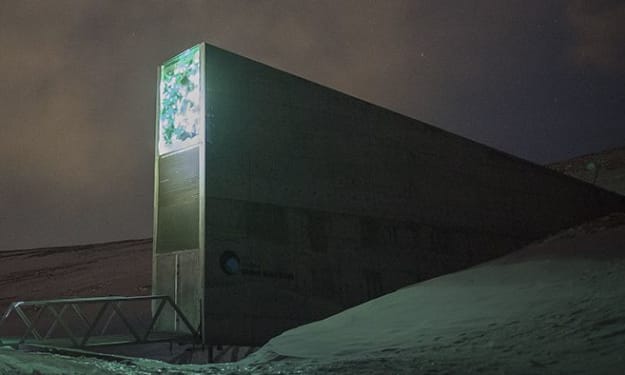
On April 11, 1970, a rocket launched from the Kennedy Space Center in America for the Apollo 13 mission. Three astronauts were aboard, destined for the moon. Remarkably, this mission came less than a year after Neil Armstrong's historic first steps on the lunar surface.
Apollo 13 was NASA's third attempt to send humans to the moon. Given the success of the previous two missions, the astronauts on board were confident and hopeful. Their dream was to walk on the moon. However, they were unaware that their dream would soon be shattered. As their spacecraft was about 330,000 km away from Earth, they heard a sudden and loud explosion, which shook the entire spacecraft. Warning lights and alarms blared as it was discovered that one oxygen tank had exploded, and the other was rapidly leaking.
"Okay Houston, we've had a problem here."
"This is Houston, say again, please."
"Houston, we have a problem."
Initially, mission control on the ground believed the instruments were malfunctioning. However, the astronauts could see the air leaking through the window. Additionally, the explosion had knocked the spacecraft off its path, causing it to drift further from Earth by the second. Within hours, the Apollo 13 astronauts had set a record for the farthest distance humans had ever been from Earth. The mission's focus shifted from landing on the moon to ensuring the astronauts could return home alive.
"Carbon dioxide levels in the module are rising. The crew was beginning to suffer. It was a dire state. It was a really, really emergency situation."
In 1961, President John F. Kennedy had promised the world that the U.S. would land a man on the moon and return him safely to Earth before the decade's end. This promise was made during the Cold War, as America and the Soviet Union competed in a space race to establish technological supremacy. The successful Apollo 11 and Apollo 12 missions fulfilled Kennedy's promise. However, the public and government interest in funding space exploration waned soon after. The excitement of a man stepping on the moon was unmatched by subsequent missions.
"The interest in the moon is fading fast. People believed that Apollo 13 would just be another routine flight."
As a result, the American government cut NASA's budget, leading to the cancellation of many planned future missions, including Apollo 20. Thus, Apollo 13 came at a critical time in space exploration history. NASA needed to prove that space exploration was still worth the investment. The primary objective of Apollo 13 was not just to explore the moon's surface but to develop the capability for humans to work in the moon's environment.
"The main mission objective of Apollo 13 is scientific exploration of the moon. We hope to find out a lot about the origin of the moon and from that the origin of our own planet Earth."
The spacecraft launched successfully on a Saturn V rocket, with astronauts Jim Lovell, Fred Haise, and Jack Swigert aboard. Interestingly, none of these astronauts were initially selected for this mission. Due to various issues, the original crew was replaced, and Lovell, Haise, and Swigert took off, witnessed by around 200,000 spectators—a stark contrast to the 7 million who had watched Apollo 11.
The spacecraft was on a smooth course to the Fra Mauro crater on the moon. The biggest problem in the first two days was when Jack Swigert realized he had forgotten to file his income tax return. Mission control humorously assured him he could get a 60-day extension. This light-hearted exchange underscored the smooth progress of the mission until that point.
At 46 hours and 43 minutes into the mission, everything seemed routine. But on the third day, April 13, during a routine check, an oxygen tank exploded, causing significant damage. The astronauts had to decide whether to return to Earth quickly or take a longer, safer route around the moon. They chose the latter, using the lunar module as a lifeboat. The lunar module was designed for two astronauts for 20 hours, not three astronauts for four to five days. The situation was dire, and the crew had to conserve supplies and energy, shutting down non-essential systems.
The mission's critical point was when the lunar module's engine was fired twice to adjust their course. Meanwhile, the rising carbon dioxide levels posed a life-threatening issue. Ingeniously, mission control guided the astronauts to create a device from available materials to filter the carbon dioxide, ensuring their survival.
The astronauts' limited water intake led to dehydration, and Fred Haise developed a urinary tract infection. Yet, they persevered, making another critical burn to correct their course. The whole world watched as the spacecraft re-entered Earth's atmosphere, with a tense communication blackout lasting longer than usual. Finally, contact was re-established, and the astronauts landed safely in the Pacific Ocean.
"Teamwork was necessary. Good leadership. Initiative to think outside of the box. When things go wrong, how do we repair them? Those are the three things that were absolutely necessary."
Although Apollo 13 did not achieve its original goal, it became a legendary mission of human ingenuity and survival. The lessons learned led to significant safety improvements in subsequent missions, ensuring the success of Apollo 14, 15, 16, and 17. Apollo 17, launched on December 7, 1972, was NASA's final mission under the Apollo program. The astronauts spent three days on the moon, marking the last time humans have visited the lunar surface. The reasons behind this cessation of moon missions continue to be a subject of interest and discussion.
About the Creator
Enjoyed the story? Support the Creator.
Subscribe for free to receive all their stories in your feed. You could also pledge your support or give them a one-off tip, letting them know you appreciate their work.





Comments
There are no comments for this story
Be the first to respond and start the conversation.